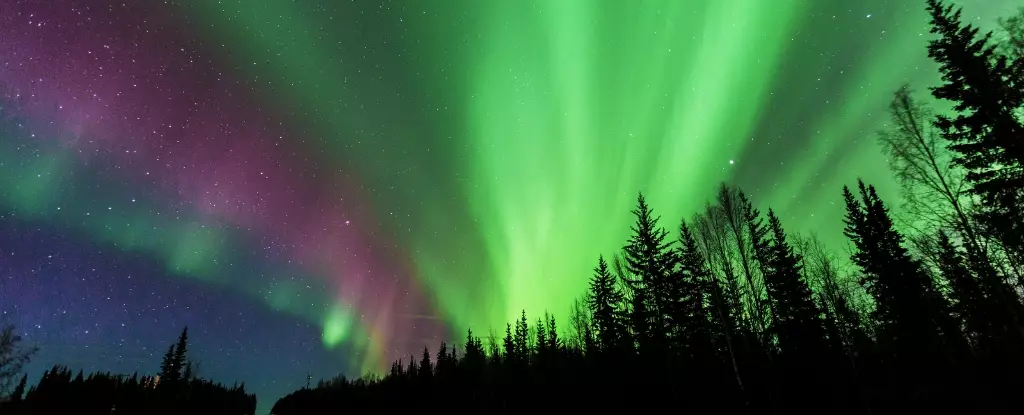The recent surge in the visibility of the northern and southern lights across the globe was a result of a powerful solar storm disrupting the Earth’s magnetic field. This phenomenon was brought on by the Sun’s heightened activity as it nears the peak of its 11-year cycle. The increased solar activity leads to the release of high-energy particles that interact with the Earth’s magnetic field, causing the stunning auroras that illuminate the sky. These auroras are typically observed at high latitudes but can extend to lower latitudes during intense solar events.
The process behind the formation of auroras is intriguing. High-energy particles from the Sun are channeled towards the Earth by the solar magnetic field. Upon reaching the Earth’s magnetic field, these particles undergo reconnection and rush down the magnetic field lines. When these particles collide with atmospheric particles like oxygen, hydrogen, or nitrogen, energy is exchanged, resulting in the emission of visible light. The varying colors of auroras are determined by the type of atmospheric element involved – nitrogen contributes to blues and purples, while oxygen produces greens and reds.
The Earth’s magnetic field, much like a magnet, can be compressed and released based on external factors such as solar activity. The intensity of solar pressure influences the proximity of magnetic field lines to the equator, leading to the visibility of auroras at lower latitudes. While this natural phenomenon is a sight to behold, the shifting magnetic field can pose risks to modern infrastructure. The induction of electrical currents in power lines, train tracks, and pipelines during geomagnetic storms presents potential hazards.
The impact of geomagnetic storms extends beyond Earth to affect technology in space. Satellites, lacking sufficient grounding, are vulnerable to electrical surges caused by fluctuations in the Earth’s magnetic field. The destruction of satellite instruments and communications due to such surges can result in significant financial losses. Moreover, changes in the magnetic field can disrupt GPS systems and satellite internet speed, highlighting the far-reaching consequences of geomagnetic activity.
Researchers utilize instruments like the “planeterella” to simulate auroras and study magnetic field interactions. By replicating solar wind effects on a magnetic sphere in a vacuum chamber, scientists can observe how auroras evolve based on magnetic field variations. These experiments provide valuable insights into the magnetic fields of celestial bodies and contribute to our understanding of auroral phenomena.
With each geomagnetic storm, advancements are made in technology and infrastructure to mitigate potential damages. By learning from past incidents, such as the power outage in Quebec in 1989, where a transformer melted due to a geomagnetic storm, researchers and engineers work towards improving protective measures against future events. The continuous improvement in monitoring and safeguarding systems ensures better resilience against the impacts of intense geomagnetic activity.
The ethereal beauty of auroras is intertwined with complex scientific processes and magnetic field dynamics. While these natural light displays captivate observers worldwide, they also serve as a reminder of the intricate relationship between solar activity, magnetic fields, and technological infrastructure. By delving deeper into the science behind auroras, we gain a deeper appreciation for the wonders of the natural world and the importance of safeguarding against potential risks posed by geomagnetic events.



Leave a Reply